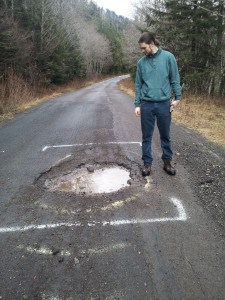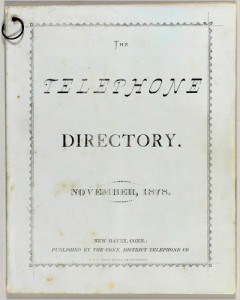
Good thing the Washington Post’s Fact-Checker doesn’t check many of the claims on this site, right? In reality, this article about Senator Tester’s “whoppers” could just as easily be a FACT CHECK on the entire Montana political, media and environmental establishment, which also repeat variations of these same lies and untruths, and have for years. I’m especially interested to see what the Montana News Media does with this fact-based information, obtained directly from the US Forest Service. – mk
Montana senator twice gets his facts wrong on timber sales and litigation
By Glenn Kessler February 25
http://wapo.st/18kUG33
“Unfortunately, every logging sale in Montana right now is under litigation. Every one of them.”
– Sen. Jon Tester (D-Mont.), interview with Montana Public Radio, Feb. 18, 2015
“Nearly half of the awarded timber volume in Fiscal Year 2014 is currently under litigation.”
– revised statement issued by Tester’s staff, Feb. 19, 2015
Our inbox started flowing with e-mails from outraged residents of Montana shortly after Montana Public Radio ran an interview in which Sen. Jon Tester (D-Mont.) asserted that “every logging sale” in the state was “under litigation.” The complaints also reached the radio station, as within a day, Tester’s staff offered a revised statement that focused on “volume” rather than sales. Marnee Banks, his spokeswoman, apologized for the original statement, but Tester himself made no comment.
But when we asked Tester’s staff for evidence to back up the revised statement, they simply directed us to the U.S. Forest Service, rather than explain the data themselves. It’s taken a few days to unravel the numbers, but this is a case of apples and oranges, with a few limes thrown in.
What’s the actual effect of litigation on logging in Montana?
The Facts
Logging on federal lands is an important part of Montana’s economy, with the Forest Service having the complex role of seeking to keep the forests healthy while also keeping the state’s mills running. Meanwhile, environment groups in the region are active in making sure the agency does not violate key laws, such as the Endangered Species Act.
Thus, there is an inherent tension. Even so, in 2014, the Forest Service’s Northern Region which includes Montana, met its timber harvest goal for the first time in over 14 years. The region harvested 280 million board feet — enough to build nearly 10,000 homes.
The Forest Service also recognizes the important role of environmental groups who challenge some of its decisions. “Things should be litigated that need to be litigated,” said Heather Noel, a Forest Service spokeswoman. “If there is something the Forest Service has missed, it is very healthy. We absolutely should be tested on that.”
But, despite Tester’s protestations, there is relatively little litigation involving timber sales — and even when there is, it generally does not halt logging operations.
First of all, let’s examine Tester’s claim about every logging sale. According to Tom Martin, a Forest Service deputy director for renewable resource management, there are 97 timber sales under contract in Montana’s national forests. Of that number, just 14 have active litigation, so about 14 percent. But only four of the sales are enjoined by a court from any logging.
These four sales are the Miller West Fisher timber sale in Kootenai National Forest, two Glacier Loon sales (Swan Flats Stewardship and Lunar Kraft Stewardship) in Flathead National Forest and Meadow Creek in Beaverhead-Deerlodge National Forest. We might question the inclusion of Meadow Creek on this list because Forest Service records show the agency itself pulled the decision without explanation. In the Flathead case, the Forest Service choose to appeal rather than accept a court decision ruling against it, thus extending the delays itself.
In any case, even if one accepts the Forest Service’s definition of enjoined sales, just 4 percent of the timber sales cannot be logged because of litigation.
Meanwhile, there are problems with Tester’s revised statement. In that case, he tried to change the subject by changing the metrics. “What we gave was volume of sales,” acknowledged David Smith, another Forest Service spokesman. “That’s quite different from number of sales litigated.”
But it turns out that the volume of sales under litigation (69.4 million board feet) was being measured against annual timber volume (145.3 million board feet). That is apples and oranges, since “very little of this 69.4 million has been cut this year,” Noel acknowledged.
Moreover, “under litigation” is a rather expansive term because it includes projects which are still being logged even as disputes are settled in courts. (The Forest Service also sometimes counts as “under litigation” areas which are not under contract or where an environmental group simply has said it intends to sue.)
The Forest Service ultimately provided a figure of 271.3 million board feet that is under contract in Montana, as of Dec. 31, 2014. Given that many of the projects being litigated are being logged, it is unclear how much has been cut already. So the only reliable figure we can use is the projected volume of the four projects that are enjoined from any logging: Miller West Fisher (15.4 million board feet), Swan Flats (6), Lunar Kraft (4.3) and Meadow Creek (2).
That adds up to 27.7 million board feet, or about 10 percent of board feet remaining under contract. That’s a far cry from “nearly half.”
We should also note that of Montana’s nine national forests, only three have projects under contract that have been halted by litigation.
The Pinocchio Test
Given that Tester is the senior senator from Montana, his comments on litigation in Montana’s national forests are embarrassingly wrong. In both statements, he was wildly off the mark. He needs to brush up on his facts — and his math — before he opines again on the subject.
Four Pinocchios






